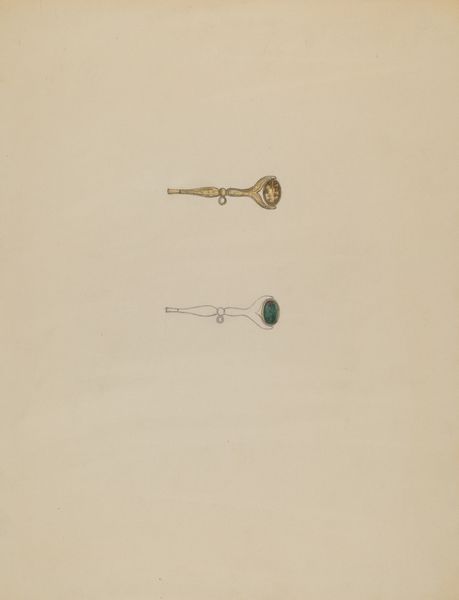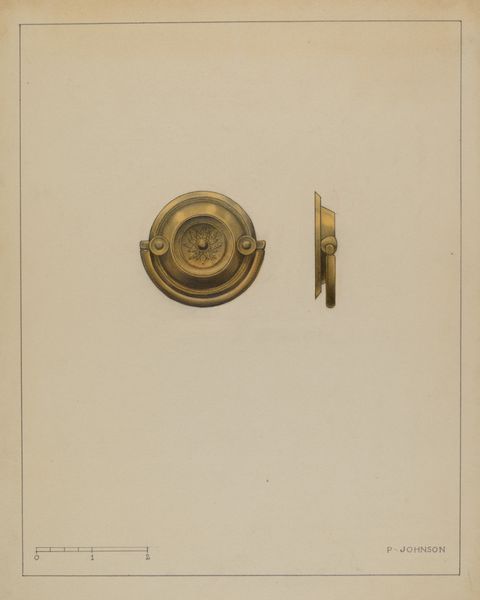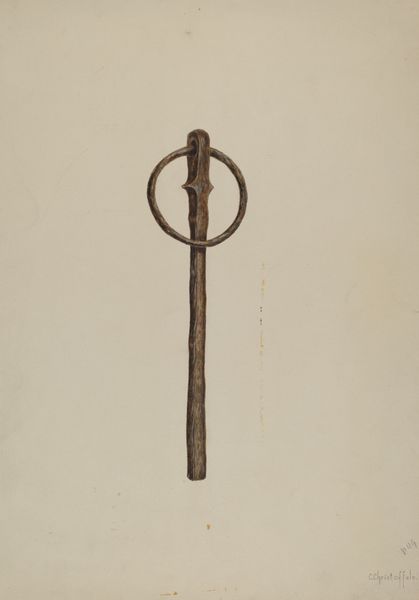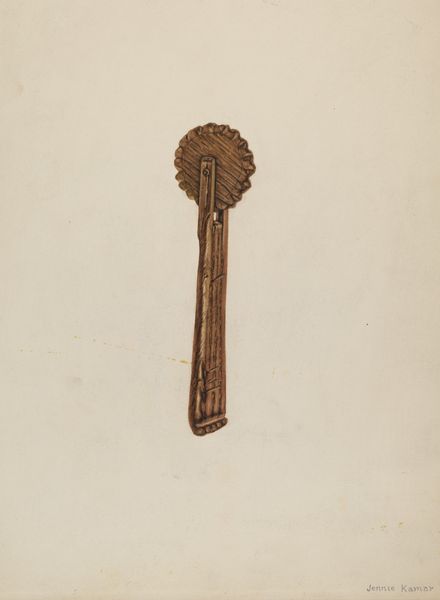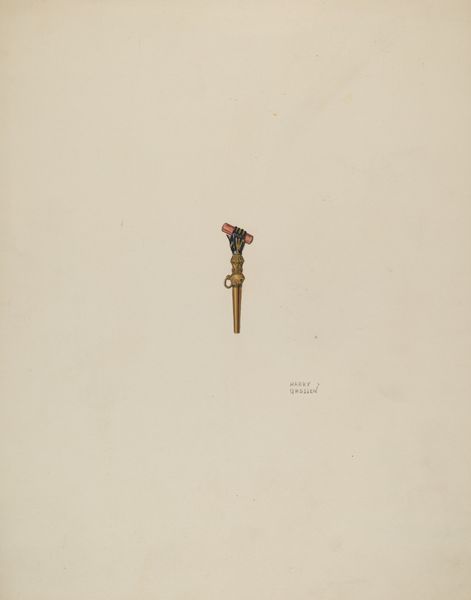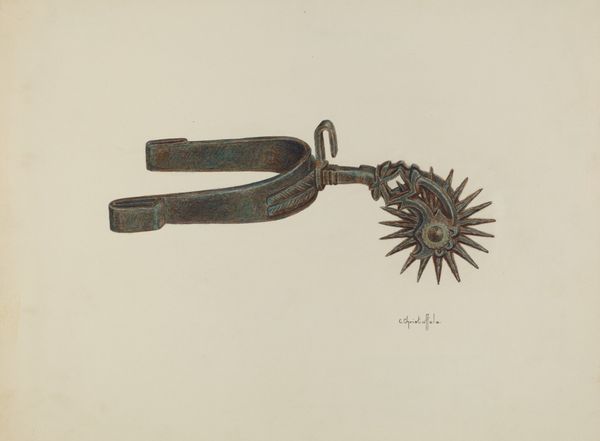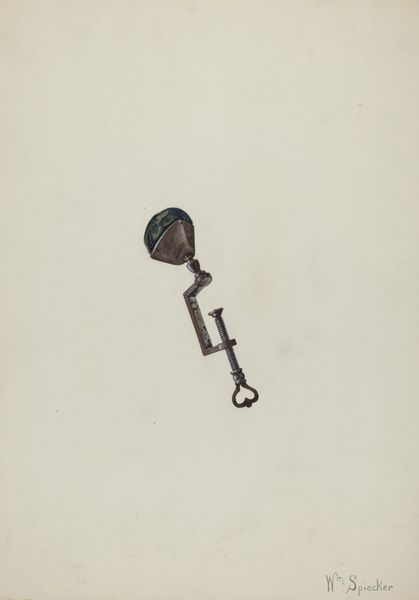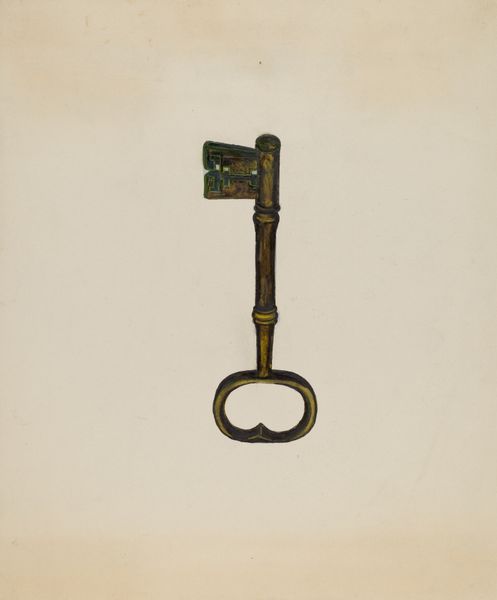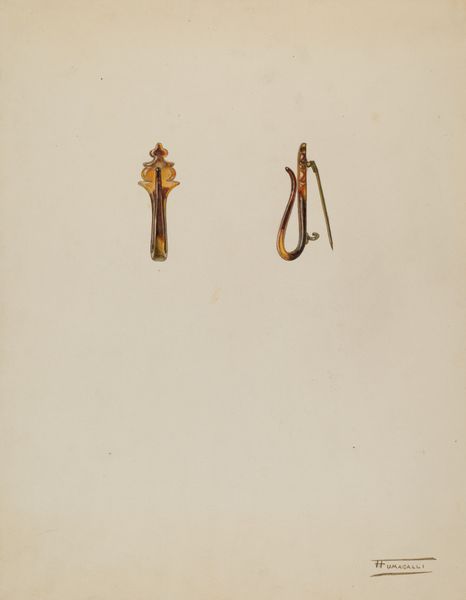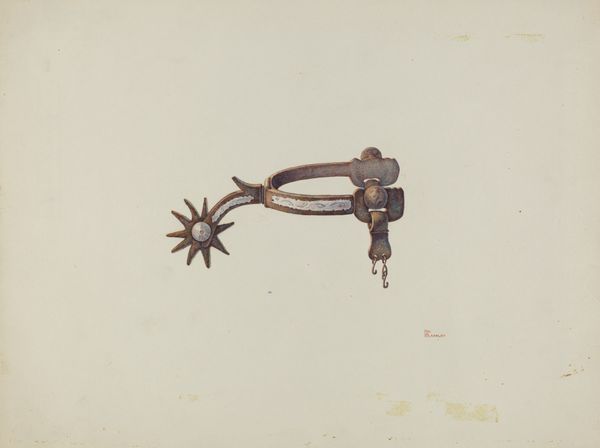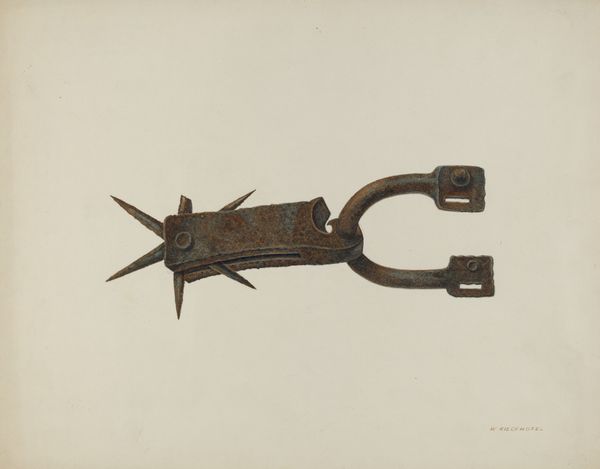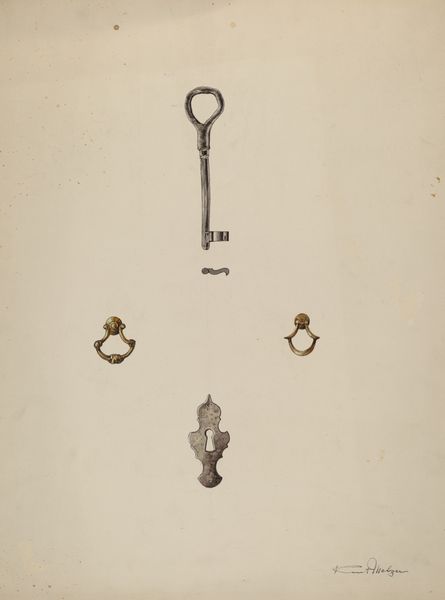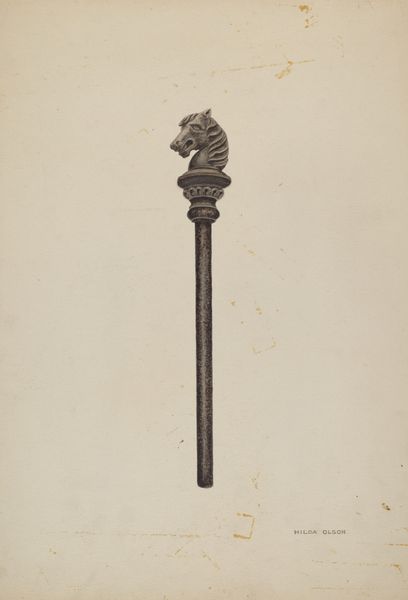
drawing, pencil
#
drawing
#
pencil
#
academic-art
Dimensions: overall: 28 x 22.5 cm (11 x 8 7/8 in.)
Copyright: National Gallery of Art: CC0 1.0
Curator: Look at this fascinating object—a pencil drawing titled "Pie Crust Fluter" by Frank M. Keane, created around 1939. It presents a seemingly mundane kitchen tool. Editor: It's incredibly precise. The pencil work captures a quiet beauty and intricate form in what would usually be an overlooked object. There’s a domestic stillness to it. Curator: Absolutely. Keane meticulously depicts the fluter's form. Consider the tool itself—it speaks to labor and domestic production. The repetitive action of fluting pie crusts, likely a gendered activity at that time. This seemingly simple drawing embodies complex societal structures surrounding the roles women play. Editor: I agree. The detail prompts reflection on the everyday lives and hidden work involved in food preparation and social class. Who would own such a specialized tool? Who might be excluded from the culture surrounding its use? How did that tool create opportunities for social gathering or artistic creation, but also boundaries around gender roles within food preparation? Curator: Exactly! And think about the context of 1939. We are on the brink of war. Consumerism is rapidly rising, and suddenly even kitchen gadgets hold the power of elevating someone in status. This object, preserved in such meticulous detail, also documents that social context. What's interesting, too, is the material—pencil—a relatively inexpensive, widely accessible material used to capture the form of this object. It democratizes it in a way. Editor: And in drawing attention to something so overlooked, perhaps Keane hints at a more revolutionary undercurrent? Highlighting the contributions, skill, and the under-recognized creativity of women in the kitchen could itself be an activist gesture. This tiny tool whispers stories of labour and social change through women in the home. Curator: Yes, and in examining both the object depicted, as well as the materials employed in this representation, it's really easy to extract multiple narratives simultaneously. It is the quiet and meticulous work that often hides in plain sight that actually shapes history. Editor: I never thought I would say that a simple kitchen tool immortalized in pencil could unveil so many fascinating things about identity and cultural impact of something as basic as making a pie!
Comments
No comments
Be the first to comment and join the conversation on the ultimate creative platform.
